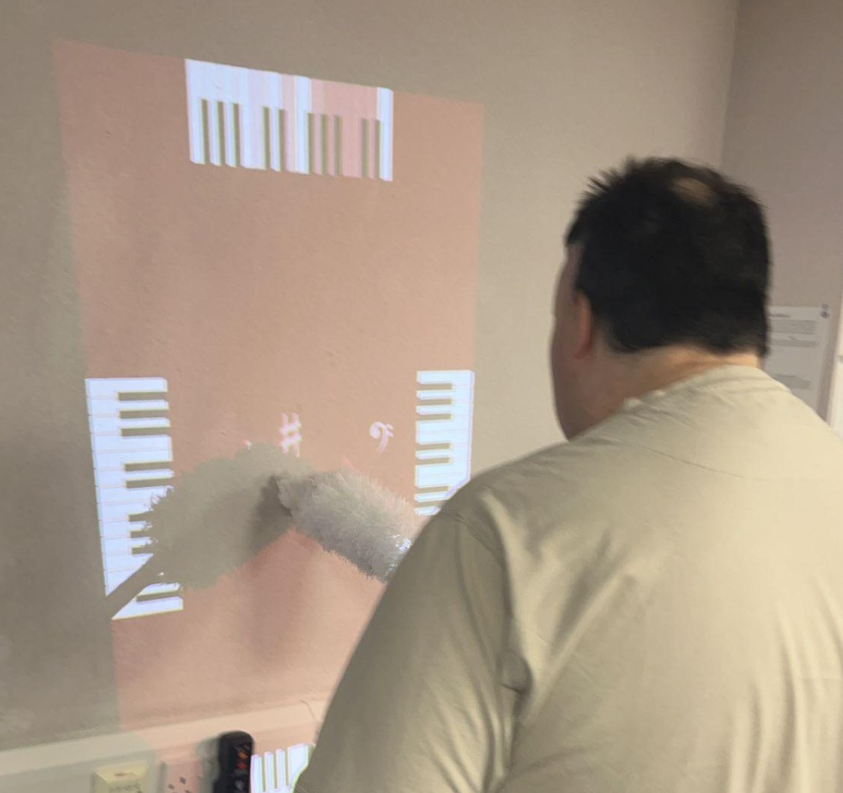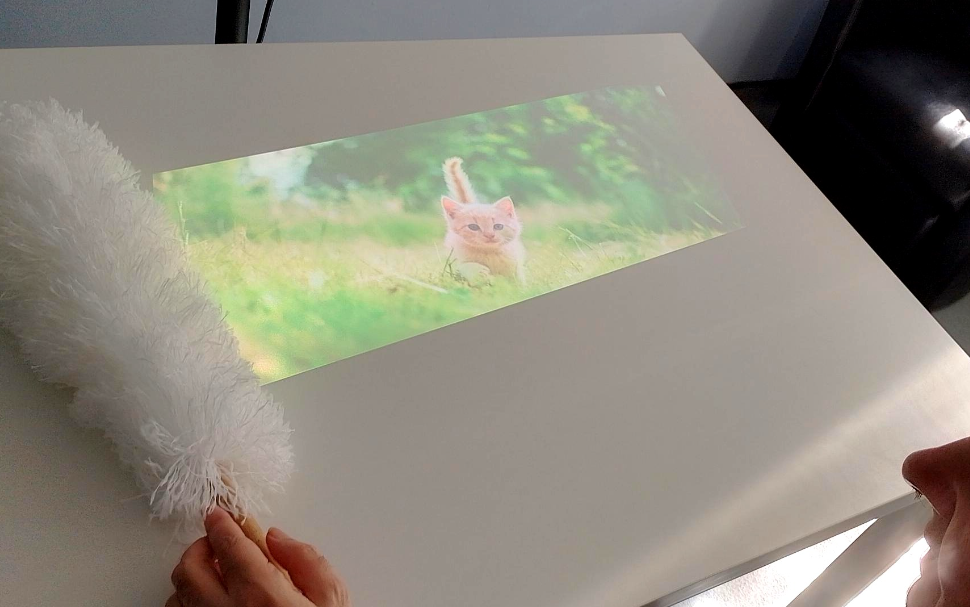We spoke with Louise Hughes, the Deputy Manager at Leeds Autism Services. They use the Happiness Programme across 2 of their sites. Leeds Autism Services is a service that supports adults with autism at day centres and on an outreach basis. You can read more about how they’ve been using the Happiness Programme below.
“We started using the Happiness Programme at one of our bases in the Summertime, so a lot of the time we were using the sensory videos, like the sheep in the field because we don’t have any external windows in the main communal area. It was quite nice to project onto the walls a nice Summery scene, train ride too.”
“Some of the people we support on outreach come in specifically to use the games. The Quizzes and Karaoke are pretty popular and then we moved it to our other base so that we could trial it there. We use it differently there, more for table top games rather than sensory stuff, as we project it onto the table. We’ve just moved it back to the original base in time for our Christmas party.”
“We have ne service user who likes to sit on the floor, he spends quite a lot of yime either sitting or lying on the floor and so we’ve been projecting images onto the floor around him and on his legs and he really likes it. We use the water game, so when he’s relaxing on the floor we project the water and fish in front of him and he seems to really enjoy that as it gives him something different to look at and new sensory stimulation for him.

“I think the Happiness Programme has been really good for promoting positive communication. For people who are non verbal or have limited verbal abilities, a lot of the conversations people have with them is instruction to do things or functional conversation, whereas when the projector is on it promotes conversation around other things like looking at what’s on the screen. We’ve found one of our service users likes Elvis and we wouldn’t have known that if it wasn’t for the Elvis Radio game on the projector.”
“It promotes conversation even when it doesn’t seem like someone is engaging directly with the projector, they might interact in a different way. One service user who was sat watching the quiz and didn’t participate in giving answer but after went and made his own quiz. I feel like it has a really positive effect on people.”
“The support we provide is one on once but we do have a communal space where we use the Happiness Programme and multiple people interact with it. We’ll project bubble pop on the wall, and even if service users aren’t directly using it they might get up to go to the toilet and pop a bubble as they go, or you get service users who are more engaged with it and playing with it directly, and then someone might start talking about bubbles, it generates quite a lot of conversation and interaction.”
“We have one lady who we set up the projector for on the wall and she wanted the Christmas Eve projection. She’d been sat watching the snowy window and when Santa came through the sky she’d jump up and kiss the wall where he was projected. She sat and watched that for a whole morning, I offered to put on other games and she said no this is what I want to do. She really enjoyed it and it was really nice to see.”
“I think a lot of people have had really positive interactions with it, we’ve used props like feather dusters and things like that. One of our service users was playing the Autumn Leaves game on the table and he was swishing the leaves around and I had to coax the feather duster back after we’d turned it off because of how much he was loving it, he didn’t want it to stop.”

“Definitely. I really like the fact it has themes. Even having the Christmas stuff recently and being able to look forward to the new stuff coming, it’ll generate more interest. There’s a lot more potential for it’s use and I would recommend it to people, I think it’s a really positive bit of kit.”
“I think a lot of people have had really positive interactions with it, we’ve used props like feather dusters and things like that. One of our service users was playing the Autumn Leaves game on the table and he was swishing the leaves around and I had to coax the feather duster back after we’d turned it off because of how much he was loving it, he didn’t want it to stop.”
The Happiness Programme is a first-of-its-kind initiative helping to change the lives of people living with cognitive challenges. We use interactive light technology to provide meaningful activities for residents and patients in care homes and care settings. For more detail on what the Happiness Programme is and how it’s helping care venues across the UK, visit our getting started page.
Alternatively, jump to our dementia, learning disability and NHS pages for more specific detail on how it’s helping care homes like Barchester and HC-One as well as hospitals and local authorities such as St George’s Hospital, London and Westminster and South Kensington Council.
For anything else, you can contact us here too.

Copyright © 2021 Social-ability. All Rights Reserved.